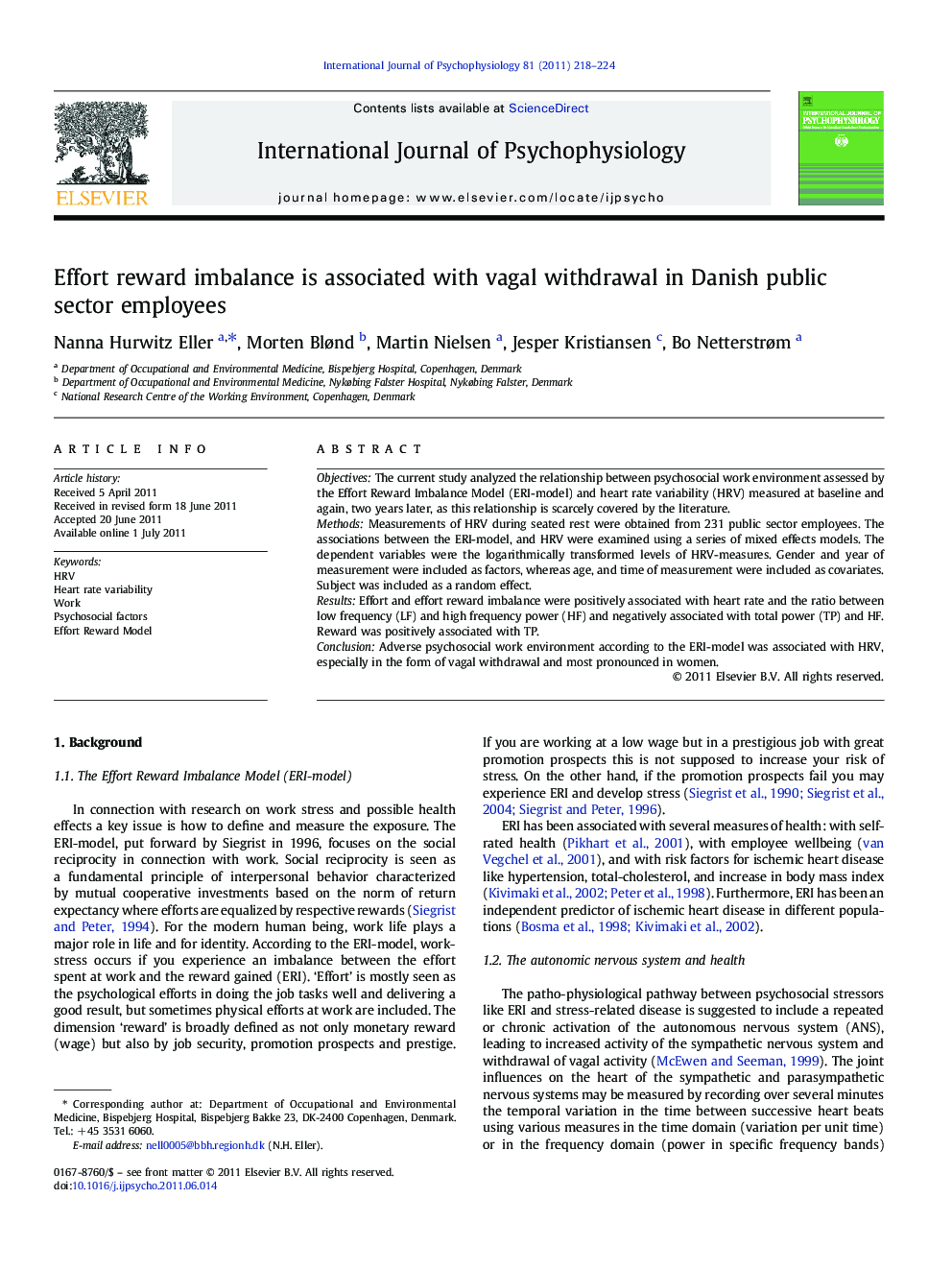| Article ID | Journal | Published Year | Pages | File Type |
|---|---|---|---|---|
| 930597 | International Journal of Psychophysiology | 2011 | 7 Pages |
ObjectivesThe current study analyzed the relationship between psychosocial work environment assessed by the Effort Reward Imbalance Model (ERI-model) and heart rate variability (HRV) measured at baseline and again, two years later, as this relationship is scarcely covered by the literature.MethodsMeasurements of HRV during seated rest were obtained from 231 public sector employees. The associations between the ERI-model, and HRV were examined using a series of mixed effects models. The dependent variables were the logarithmically transformed levels of HRV-measures. Gender and year of measurement were included as factors, whereas age, and time of measurement were included as covariates. Subject was included as a random effect.ResultsEffort and effort reward imbalance were positively associated with heart rate and the ratio between low frequency (LF) and high frequency power (HF) and negatively associated with total power (TP) and HF. Reward was positively associated with TP.ConclusionAdverse psychosocial work environment according to the ERI-model was associated with HRV, especially in the form of vagal withdrawal and most pronounced in women.
► Stress due to work stressors is suggested to include chronic activation of the autonomous nervous system. ► Heart rate variability mirrors the activity of the autonomous nervous system, i.e. sympathetic and parasympathetic activity. ► Vagal withdrawal is a cardiovascular risk factor. ► This study suggests that ERI may be associated with vagal withdrawal.
